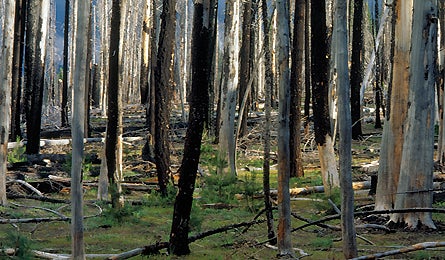Danger Signs: Burn Zones

'Photo by Thomas Hallstein'
The last two wildfire seasons rank as the most severe–in terms of total acreage burned–in the Lower 48 since 1960. Lots of charred terrain is not necessarily a bad thing, as any ecologist or wildflower fan will attest. But it does pose special hazards for backpackers.
Heat The missing forest canopy creates unobstructed views, but also increases exposure to UV rays and dehydrating wind. Pack extra sunscreen and water to protect yourself.
Debris On particularly gusty days, avoid natural wind tunnels like ridges, passes, and valleys. Strong wind blasts can topple dead trees and strip away dangling branches. Climbing over (and scrambling under) fallen trees can slow your pace to a crawl; detour around them if possible. Plus, heavy rains can spawn mudslides and debris flows on steep, denuded slopes.
Brush After a fire, fast-growing alder and poplar can obscure trails and signs. Pack a topo map and GPS, and consult local rangers about post-fire route changes and disruptions to water sources. When traversing featureless burn zones, orient yourself using permanent landmarks like lakes and peaks.